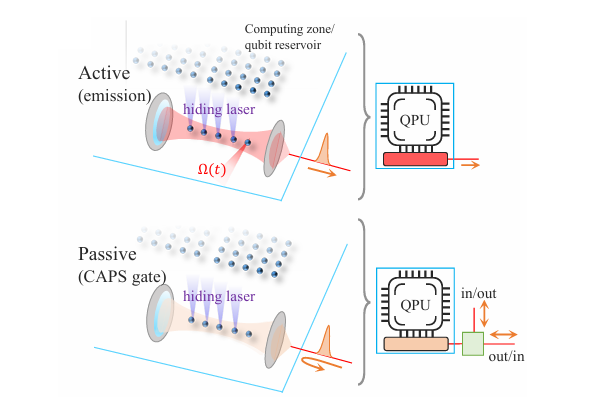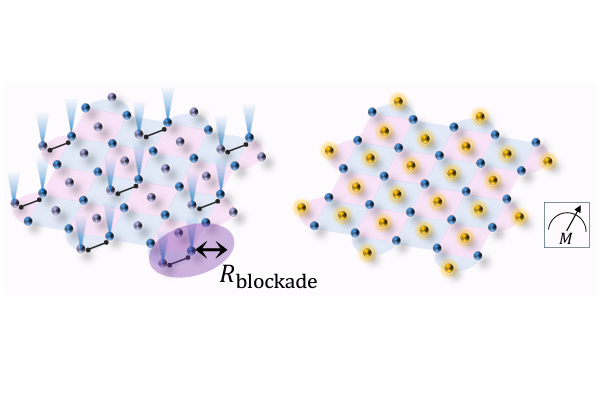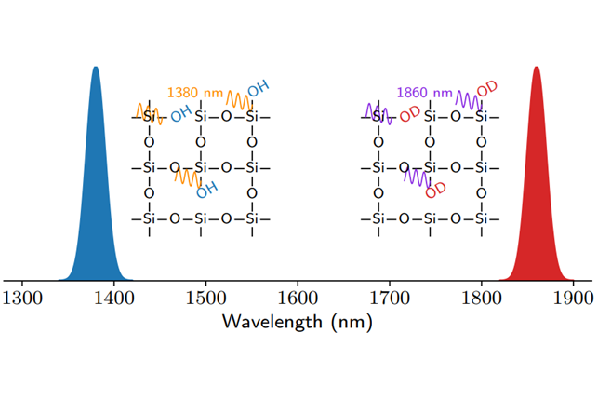Breaking Fiber Network Limits: Satellite-Assisted, Cavity-Based Global Quantum Network
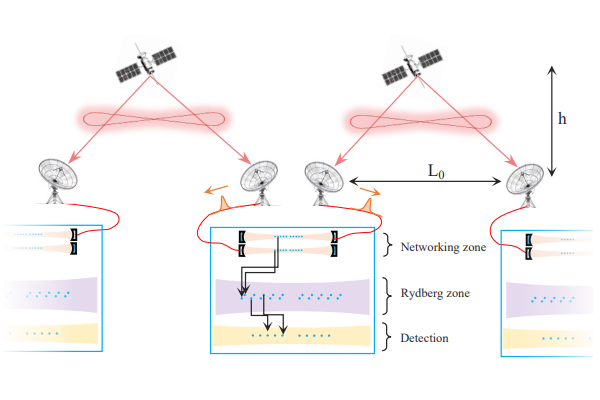
The full paper is available at: https://arxiv.org/abs/2507.02333
Introduction
Researchers at NanoQT, in collaboration with Prof. Simon’s group at the University of Calgary, have released a new preprint (arXiv:2507.02333 [1]) proposing a global quantum-network architecture that integrates Low-Earth Orbit (LEO) satellites carrying multiplexed spontaneous parametric down-conversion (SPDC) entangled-photon sources with ground stations hosting single-atom memories in optical cavities. Incoming photonic entanglement is mapped onto atoms using a memory-loading protocol based on a cavity-assisted photon-scattering (CAPS) gate, detailed in our recent paper [2], and long-range links are extended via near-deterministic entanglement swapping enabled by Rydberg gate in the quantum processing units (QPUs). Under realistic link budgets and cavity/QPU parameters, the architecture distributes more than 10,000 Bell pairs per satellite flyby over approximately 10,000 km with greater than 90% fidelity, outperforming purely terrestrial repeater chains using fiber networks.
This system-level study builds directly on our perspective paper [3] on nanofiber-cavity interconnects, emphasizing fast, multiplexed entanglement generation, which established device-level design principles for high-rate operation. Together with the CAPS memory loading primitive [2], these results outline a coherent blueprint across cavity and gate specifications, satellite payload design, and ground station multiplexing, making possible high rate, high fidelity, intercontinental quantum links via cavity-based atom-photon interfaces.
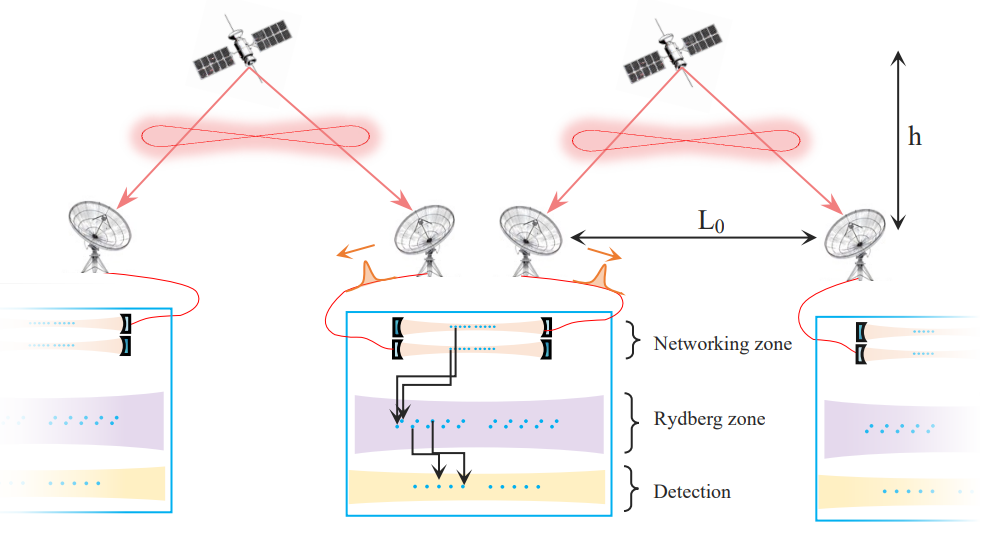
Challenge of a Quantum Network
Photons are ideal for long-distance connectivity, but optical-fiber loss grows exponentially with distance and cannot be mitigated by classical amplification because of the no-cloning theorem. Even in the telecom band—the lowest-loss window—only about half the photons survive over 20 km at 0.20 dB/km. Memory-based repeaters can help at metropolitan scales, yet scaling beyond a few thousand kilometers remains difficult. Satellite links relieve this bottleneck because free-space loss is set primarily by diffraction (∝ 1/distance²), as captured by standard space-to-ground channel models. Momentum on the satellite side is already clear: compact microsatellites have demonstrated real-time QKD with secure keys generated during a single pass, indicating that space-based quantum networking is moving from concept to deployment [4].
In our architecture, the satellite payload is intentionally minimal: it needs a flight-qualified entangled-photon source that has already been demonstrated in orbit, a modest aperture, standard pointing and beacon hardware, and timing/telemetry. No onboard quantum memory or complex processing is required. The technical complexity is concentrated on the ground: cavity-based atom–photon interfaces for memory loading and readout, low-loss coupling and spectral filtering, polarization and phase stabilization, adaptive optics and tracking under turbulence, and time/wavelength multiplexing at the receiver. Our analysis explicitly models realistic downlinks—time-dependent geometry, diffraction, atmosphere, pointing, and coupling—so the predicted rates and fidelities reflect full flyby dynamics while highlighting that the satellite requirements are minimal and the heavy engineering resides at the ground station.
Our solution: Satellite-Minimal, Ground-Optimized Architecture
Minimal satellite payload: In our architecture, the satellite carries only what is needed: a flight-qualified entangled-photon source already demonstrated in orbit, a modest transmit aperture, standard pointing and beacon hardware, and timing/telemetry [5]. No onboard quantum memory or complex processing is required. The engineering burden is intentionally concentrated at the ground station.
Entanglement mapping at the ground station (CAPS): Each ground station receives one photon from a polarization-entangled SPDC pair and directs it into a single-sided nanofiber cavity hosting a single neutral-atom memory. The interaction is a CAPS gate: upon reflection, the photon acquires a state-dependent phase (π phase on the coupled mode) conditioned on the atomic qubit. A simple interferometer (for example, Sagnac or Mach–Zehnder) with a tunable reference arm makes the two optical paths indistinguishable. A designated erasure port converts mismatch events into heralded discards rather than infidelities, so a single heralding click maps the incoming photonic entangled state onto remote atoms. The protocol supports polarization or time-bin encodings and naturally accommodates large-scale multiplexing, with many spectral channels routed to parallel cavities. In practice, optional quantum-frequency conversion aligns the satellite emission band to the cavity. The result is high-fidelity, heralded loading of single-atom memories at useful per-flyby rates.
Deterministic entanglement swapping via Rydberg gate: After neighboring links are loaded, a local Bell measurement implemented with a near-deterministic Rydberg two-qubit gate swaps the entanglement to the outer nodes, extending the end-to-end distance, as illustrated in Figure. This avoids the 50% success ceiling of linear-optics Bell measurements and markedly increases end-to-end throughput. Because the swap is gate-based and locally heralded, operations can be pipelined across many spatial and spectral modes within each satellite flyby, with classical feed-forward and optional purification as memory and link budgets allow.
End-to-end modeling and performance: Our analysis models realistic downlinks, including time-dependent geometry, diffraction, atmospheric transmittance, pointing, and receiver coupling. Rate and fidelity predictions therefore reflect full flyby dynamics, while highlighting that satellite requirements are minimal and the critical engineering resides at the ground station.
Prospect
High distribution rates arise from end-to-end multiplexing with tight scheduling. A broadband SPDC source is partitioned into many frequency modes (demultiplexed and, if needed, frequency-converted) and delivered over multiple spatial channels to parallel receiver modules. Each ground station operates an array of single-atom cavities with fast heralding and rapid reinitialization, so successful loads immediately free resources; feed-forward then triggers a local Rydberg-gate Bell-state measurement as soon as two neighboring links are ready. Noise is controlled via narrow temporal gating, adaptive thresholds, and per-channel background subtraction, and retries are targeted only where heralds fail—pushing the duty cycle toward detector, cavity, and gate limits. With near-term components, this approach yields approximately 10,000 Bell pairs per flyby over ~10,000 km at ~90% fidelity for an eight-link chain, with projections accounting for full flyby geometry, downlink loss, coupling fluctuations, finite memory lifetimes, and gate/readout errors.
Summary
By concentrating complexity at the ground stations (single-atom cavities and Rydberg-based QPUs) and using LEO satellites solely as bright, multiplexed Bell-pair sources, we provide a practical path to intercontinental entanglement distribution. CAPS enables robust, high-fidelity memory loading without active atomic excitation; Rydberg-gate Bell measurements make swapping near-deterministic; and multiplexing closes the rate gap. Together, these elements move global quantum networking from aspirational to actionable.
Reference:
[1] J-W. Ji, S. Sunami, S. Kikura, A. Goban, and C. Simon, arXiv:2507.02333
[2] S. Kikura, K. Tanji, A. Goban and S. Sunami, arXiv:2507.01229
[3] S. Sunami, et al., PRX Quantum 6, 010101 (2025) (Blog page)
[4] Y. Li et al., Nature 640, 47 (2025). [5] J. Yin et al., Science 356, 6343 (2017).
